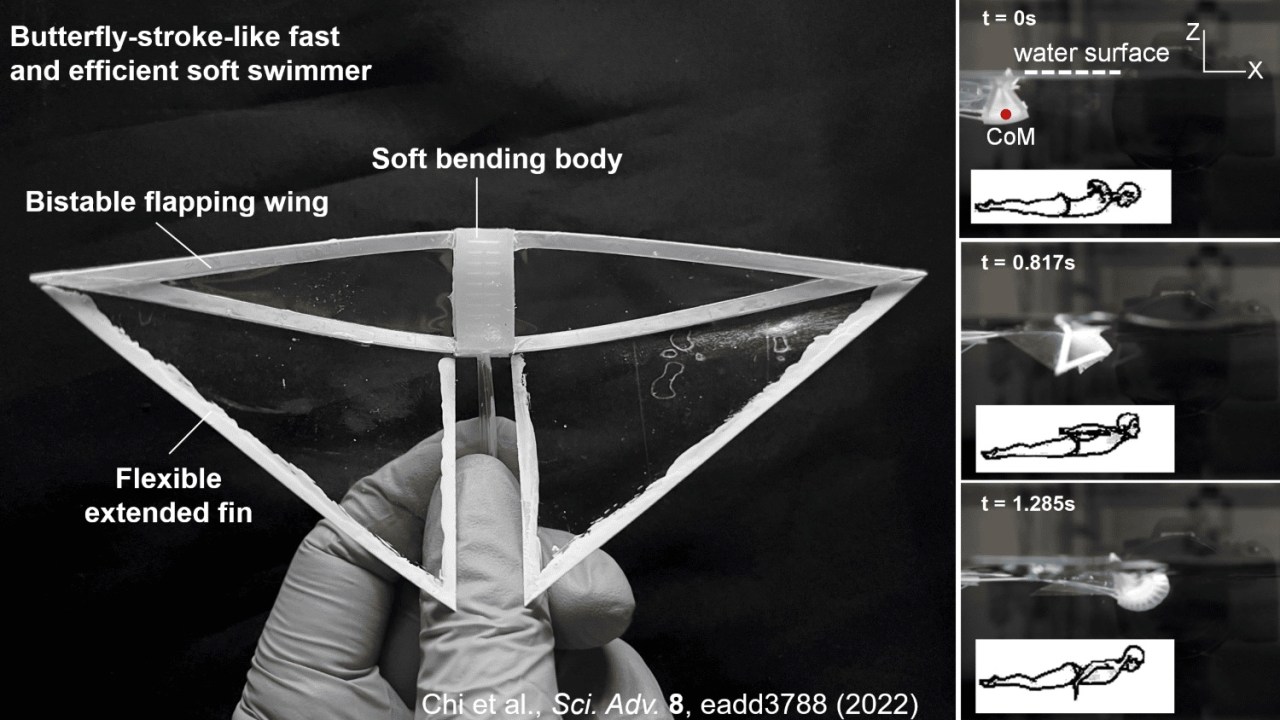In the ever-evolving landscape of technology, robotics stands out as an area ripe for exploration and innovation. Among the most exciting developments are soft robots, inspired by nature’s own designs. A recent breakthrough from a team at North Carolina State University showcases a remarkable leap forward in this field with their manta ray-inspired soft robots, playfully dubbed “butterfly bots.” These creations not only promise to revolutionize underwater exploration but also pave the way for advancements in the fields of biomimetic robotics and aquatic engineering.
Why Manta Rays? The Advantage of Nature’s Designs
Manta rays, with their majestic wings-like pectoral fins, embody the principles of efficient movement in water. Unlike conventional rigid robots, which can have limitations in flexibility and control, soft robots implement compliant structures that tread the line between speed and navigational ease. Incorporating inspiration from marine life, specifically manta rays, offers an opportunity to overcome these hurdles. As Jie Yin, a co-author of the study explains, “Marine animals, such as manta rays, are able to swim much faster, and much more efficiently.” This principle drives the research aimed at reducing the energy consumed while enhancing speed and maneuverability.
A Dual Approach: Speed Meets Control
- Speed-Built Design: The first prototype emphasizes speed, achieving an astonishing rate of 3.74 body lengths per second, a staggering feat considering prior soft robots struggled to move even one body length in that time frame.
- Control-Oriented Model: The second iteration focuses on precision, moving at 1.7 body lengths per second. This design features an innovative second drivetrain, allowing for agile turns by flapping a single wing at a time, broadening the potential applications of these robots.
The adaptation of manta ray biomechanics allows for a seamless transition between high-speed movement and controlled navigation, essential for complex aquatic environments where maneuverability is key.
Innovative Mechanisms Behind the Wings
The mechanics employed in these models are just as impressive as their aquatic counterparts. Unlike traditional flapping robots that rely on motors to power their wings, the butterfly bots utilize a pneumatic air tube system to bend the body up and down. This, in turn, propels the “wings” or fins, highlighting a significant shift in approach that simplifies the design and reduces weight. As Yin indicates, this design choice facilitates a lighter, more efficient structure, making it ideal for longevity and versatility in various underwater tasks.
The Future of Soft Robotics: Autonomy at the Forefront
The journey does not end with the prototypes developed so far. Looking ahead, the team is diligently working on creating an autonomous, untethered version of these innovative robots. Such advancements could open the floodgates for a new era of underwater exploration and research, enabling real-time data collection and analysis without human intervention. This could be instrumental in studies ranging from marine biology to underwater surveillance, granting researchers unprecedented access to aquatic environments.
Conclusion: The Ripple Effect of Biomimetic Innovations
The advancements made by the North Carolina State University team highlight the immense potential that lies in observing and mimicking nature’s designs. Soft robotics presents a unique intersection of biology and engineering, leading to innovations that could substantially alter the way we approach technology in dynamic environments. With the ongoing development of these manta ray-inspired robots, the future appears bright for both marine research and the broader field of robotics.
At fxis.ai, we believe that such advancements are crucial for the future of AI, as they enable more comprehensive and effective solutions. Our team is continually exploring new methodologies to push the envelope in artificial intelligence, ensuring that our clients benefit from the latest technological innovations. For more insights, updates, or to collaborate on AI development projects, stay connected with fxis.ai.

